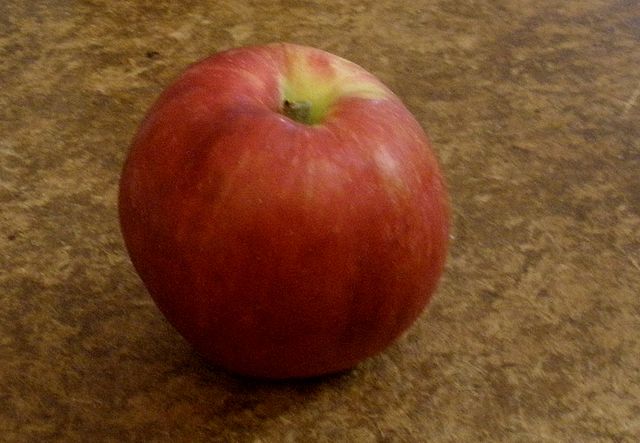Esopus Spitzenburg and the Newtown Pippin
In the early 1700s, somewhere in the state of New York, the world was introduced to Esopus Spitzenburg. The Newtown Pippin emerged about a century later. Thomas Jefferson was a fan of both, and Herman Melville, well, let’s just say that Esopus Sptizenburg is mentioned in “Bartleby, the Scrivener.” Both Spitzenburg and Pippin were well known back in their day, but ask nearly anyone about them now and you’ll be met with blank stares. The pair are part of a mostly forgotten culture of diversity.
Diversity of apples, not people. Because that’s what they are.

Apples come in different varieties, as anyone who has ever visited a grocery store knows. There’s “red delicious,” “macintosh,” “gala,” and a bundle of other types which are pretty common. Each provides a different taste and texture, and traditionally, they have different uses. Macintosh, for example, are good for baking in apple pies, but honeycrisps probably taste better as a grab-and-go snack. Fuji make for a good applesauce while red delicious are good if you want to make a sweet cider. It’s all to taste, of course, but in general, you’re selecting between about five to ten different types of apples, each with their own distinct traits.
But there are many, many other types of apples out there. They’re just not commonly found at your local market. Esopus Spitzenburg (pictured), for example, was “found on a tree in Esopus, New York, [in the] late 18th century” per Wikipedia. As noted above, Thomas Jefferson took a liking to the fruit, planting a few trees at his homestead of Monticello. The apple generally tastes good raw and is regarded to be a fine choice for apple pies. All in all, it sounds like a pretty good fruit — but you wouldn’t know it, because it’s rarely seen for sale.
Then there’s the Newtown Pippin, which sounds more like a regional, off-Broadway show than a fruit. Regardless, Jefferson enjoyed these apples to such a large degree that his writings make reference to them; when he was in Paris, one of his letters complained that “they have no apples here to compare with our Newtown Pippin.” This cultivar was so culturally relevant at its time that a U.S. minister to Great Britain once gifted a basket to Queen Victoria. But now, they’re only available commercially (outside of their use in apple cider) in a few pockets of the United States, most notably in Virginia and upstate New York.
So, why can’t the rest of us find either — or the vast majority of the thousands of other apple cultivars out there — at a fruit stand? A recent Mother Jones profile of an amateur apple historian of sorts suggests some sort of odd conspiracy — “the apple industry settled on a handful of varieties to promote worldwide, and the rest [including the two noted above] were forgotten. They became commercially extinct — but not quite biologically extinct.” This international apple cartel, one would assume, is keeping from engorging ourselves in a new kind of apple each day.
That nefarious take is probably fiction, though. More likely, we don’t get to eat Esopus Spizenburgs or Newton Pippins simply because macintoshes, Granny Smiths, honeycrisps, and the like are simply easier to grow, ship, and store. The Newtown Pippin is prone to russeting — that’s when an apple develops a brown, rough area on it — which in significant cases makes the apple unsuitable for eating. Esopus Spitzenburg apples grow inconsistently from year to year, are susceptible to apple scab, and the trees tend to grow in ways which cast shadows on one another if planted too closely. Taken together, it makes it difficult for to produce a commercially viable amount of these apples, and similar problems occur for the other seven-some-odd-thousand types which also don’t appear at the grocery store.
Bonus fact: Thomas Jefferson couldn’t keep the Newtown Pippin popular in the United States, but he did spawn a national love of another dish — macaroni and cheese. Mac and cheese wasn’t uncommon in Europe for centuries before Jefferson’s introduction to the dish — it first appeared in a 14th century cookbook — but if it weren’t for Jefferson, it may have been another century or two before it entered the United States. Jefferson learned of the dish while in Paris, and purchased a macaroni making machine afterward. According to Wikipedia, at a state dinner in 1802 during his first term as President, he served “macaroni pie” — basically, a baked macaroni and parmesan casserole — and the dish soon after became a common treat in the Washington and Virginia areas.
From the Archives: Bad Apple: It’s not an apple. And you don’t want to eat it.
Related: “Bartleby, the Scrivener,” by Herman Melville. A classic.
